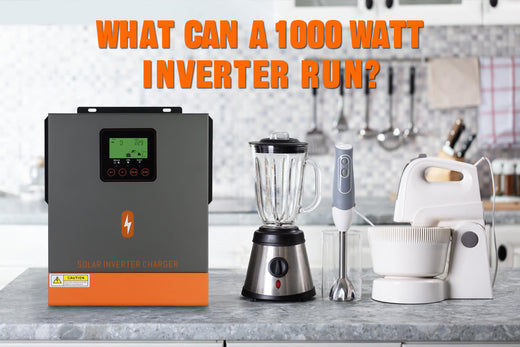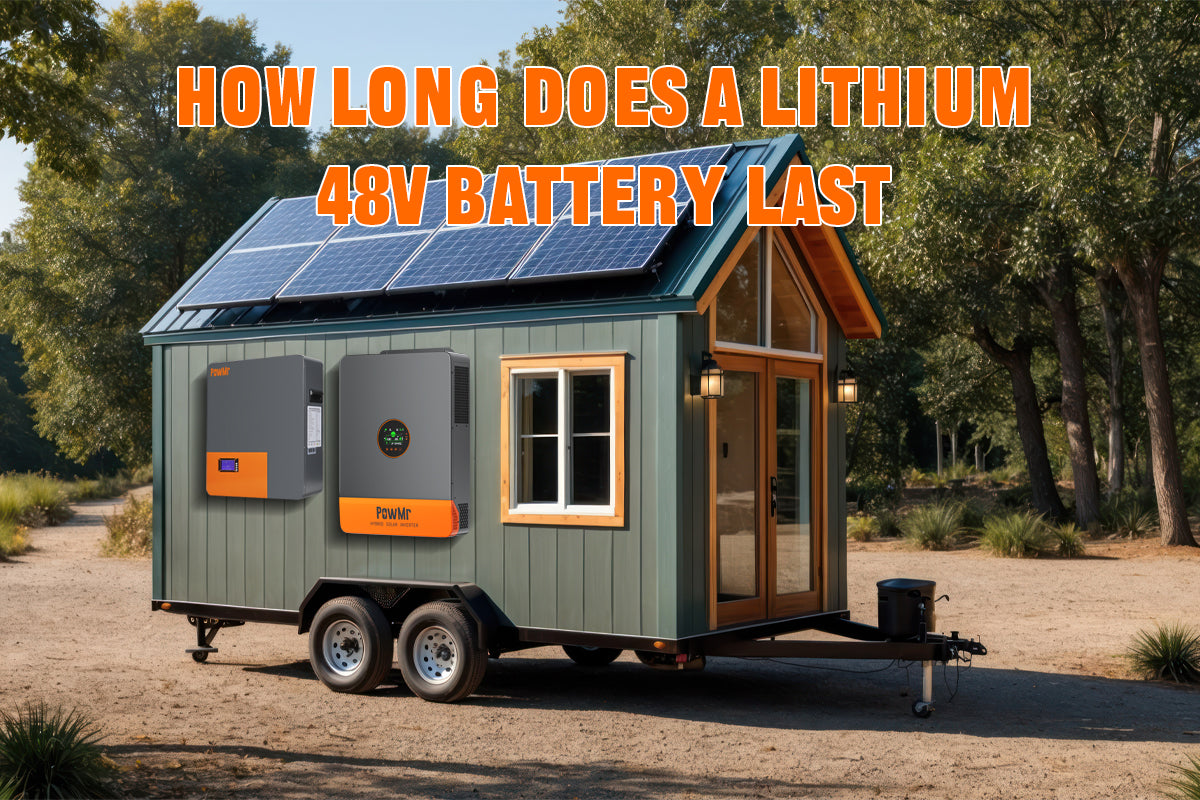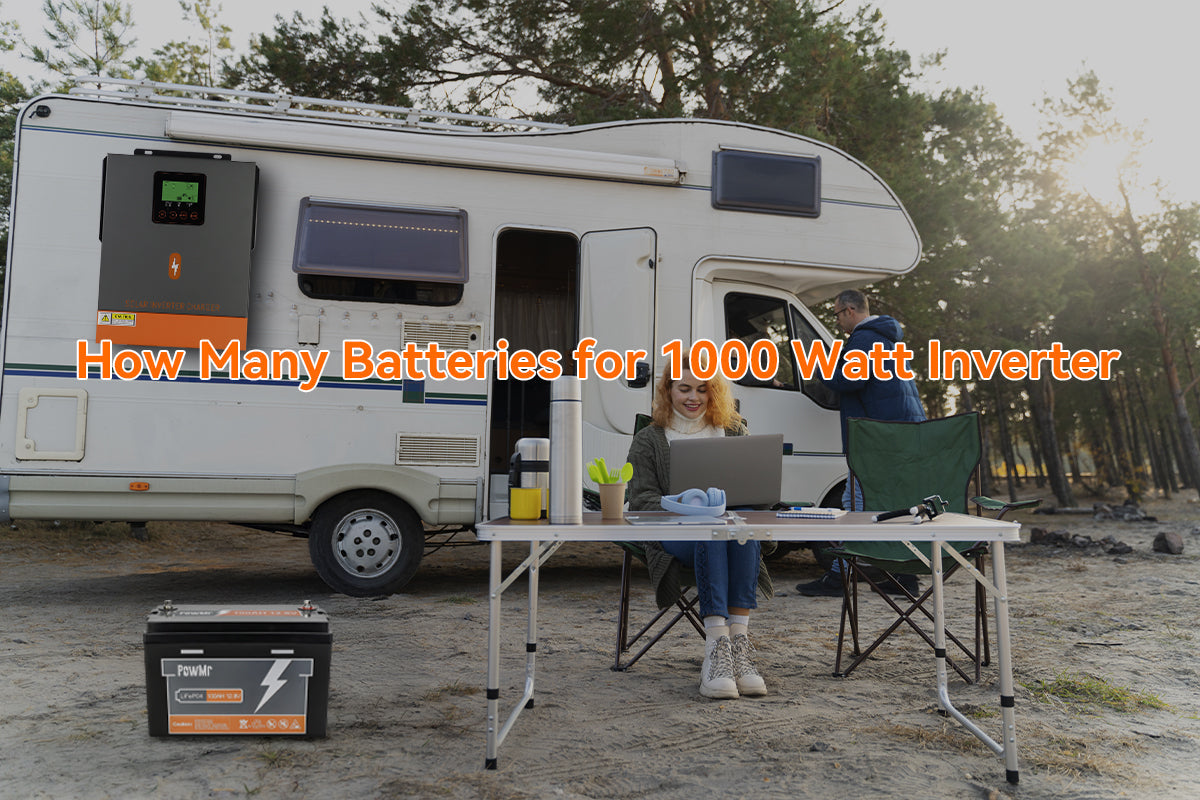Are you looking for a reliable way to power your devices on the go or during a power outage? A 1000W inverter might be the solution you need. Whether you're RVing, camping, or looking for a backup power source during blackouts, a 1000W inverter can provide the electricity you need to keep essential appliances running.
But, what exactly can a 1000 watt inverter power? In this guide, we’ll explore the types of devices you can run with a 1000W inverter and what to consider when managing energy consumption.
What Can a 1000 Watt Inverter Power?
In general, a 1000W inverter is perfect for powering small appliances, entertainment devices, lighting, and tools. It's an excellent choice for camping, emergencies, or off-grid living. While it supports TVs, mini-fridges, and CPAP machines, it may struggle with high-surge devices like standard refrigerators. With up to 1000 watts of continuous power, this versatile inverter caters to a range of needs.
Below, we explore its common applications across various user scenarios:
1. Off-Grid Living, RV Travel, and Camping
If you’re exploring the outdoors or living off-grid, a 1000W inverter can power essential devices and appliances:
Small Appliances
Devices like laptops, smartphones, tablets, cameras, and small kitchen appliances (e.g., blenders, toasters, and coffee makers) with low power requirements can easily be powered by a 1000W inverter. These devices are well within the inverter's capabilities, offering convenience and efficiency.
Entertainment Systems
You can use a 1000W inverter to run televisions, gaming consoles, DVD players, and audio systems. These devices typically have moderate power requirements and don't demand surge power, making them compatible with a 12V 1000W inverter.
Lighting
A 1000W inverter can efficiently power multiple LED or CFL light bulbs, making it a great choice for illuminating your space during power outages or in off-grid settings.
2. Emergency Backup Power
Except of lighting, During a power outage, a 1000W inverter can keep essential devices running:
Critical Devices
Power laptops, phone chargers, internet routers, or even mini refrigerators. Ensure you check the power ratings of these devices to prevent overloading.
Medical Devices
Operate portable medical equipment like CPAP machines or nebulizers. Always confirm the power specifications and follow any manufacturer recommendations for safe operation.
3. Small Tools and Equipment
For DIY enthusiasts or light construction work, a 1000W inverter can operate many power tools, such as drills, saws, and small compressors, provided their power requirements do not exceed the inverter's limits. Always check the specific power ratings of your tools to ensure compatibility.
Loads Commonly Encountered Across Scenarios
In many cases, understanding surge power requirements is crucial for ensuring smooth operation.
Surge Power Considerations
Some appliances require more power to start up than they do during regular operation—this is known as surge power. For example, refrigerators and microwaves typically have high surge demands.
Many inverters, including PowMr 1000W inverters, have a surge capacity of 2000W to handle these temporary spikes in voltage and current for up to 5 seconds. This surge capability ensures smooth operation for devices with inductive loads.
Can a 1000 Watt Inverter Run a Refrigerator?
Running a refrigerator on a 1000W inverter depends on the fridge’s power requirements. A standard household refrigerator often operates at 800W but may require a startup surge of more than 1000W, making it incompatible with a 1000W inverter.
However, a mini refrigerator with an average running power of 50-100W and a startup surge of 150-300W can typically be powered by a 1000W inverter.
Can a 1000 Watt Inverter Run a Microwave?
A standard microwave oven requires 700-1000W of continuous power and may need a surge of up to 1500W. As such, a 1000W inverter may struggle to start and operate a microwave. Always check the microwave's surge power requirements to determine compatibility.
Can a 1000 Watt Inverter Run a TV?
Yes, a 1000W inverter is sufficient to power most TVs. Modern LED and LCD TVs typically consume 50-150W, which is well within the inverter's capacity. Even larger plasma TVs, which may use up to 300W, are manageable for a 1000W inverter.
Pro Tips for Managing Power with a 1000W Inverter
If you plan to use a 1000W inverter to power high-surge appliances like refrigerators or microwaves, follow these tips to avoid overloading:
-
Disconnect other loads during startup
Ensure no other devices are connected to the inverter when starting high-surge appliances. -
Reconnect loads once stable
After the appliance has started and is running normally, reconnect additional devices.
Related Post:
Conclusion
A 1000W inverter is a versatile tool capable of powering a range of small to medium appliances, from laptops and LED lights to mini refrigerators and entertainment systems, it’s an excellent choice for off-grid living, camping, or emergency backup.
However, understanding surge power and managing energy consumption is crucial to getting the best performance from your inverter. Choose the right appliances and manage your loads wisely to maximize the efficiency and longevity of your 1000W inverter.



